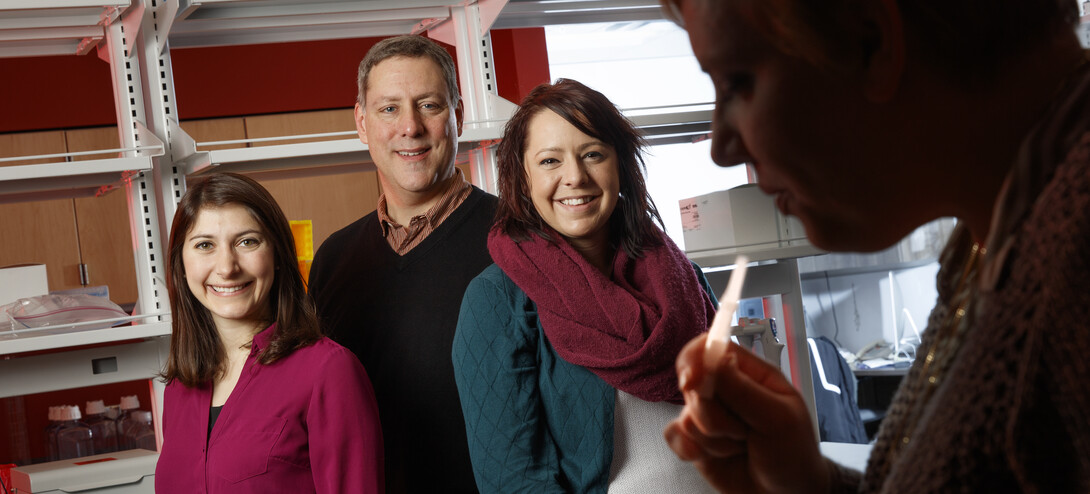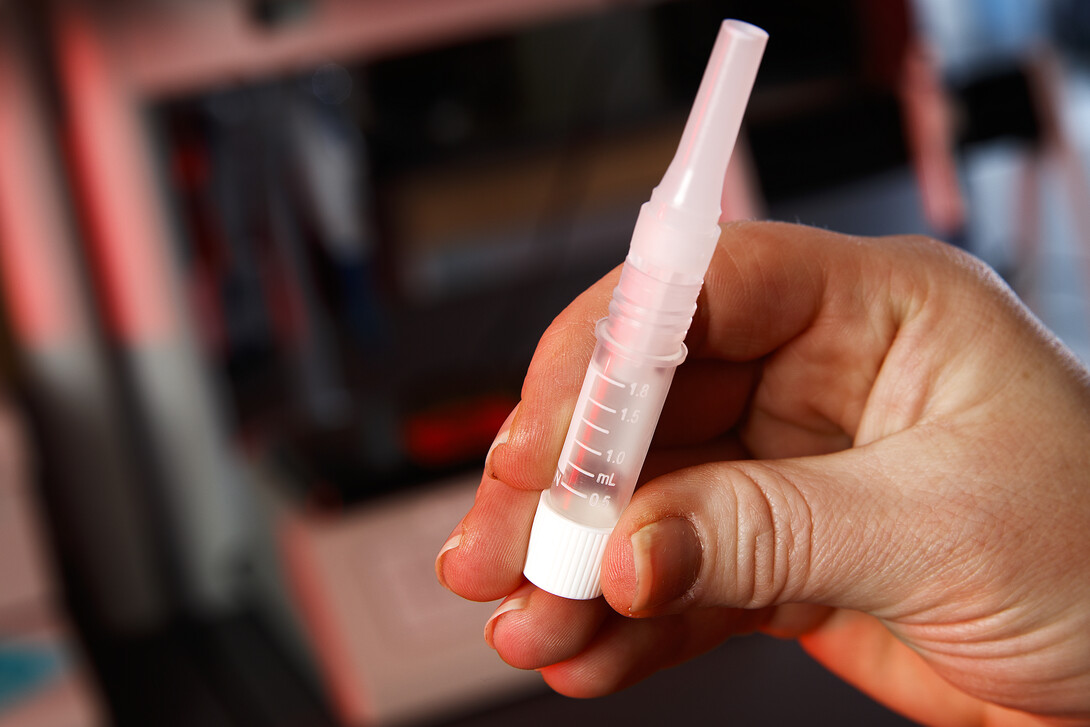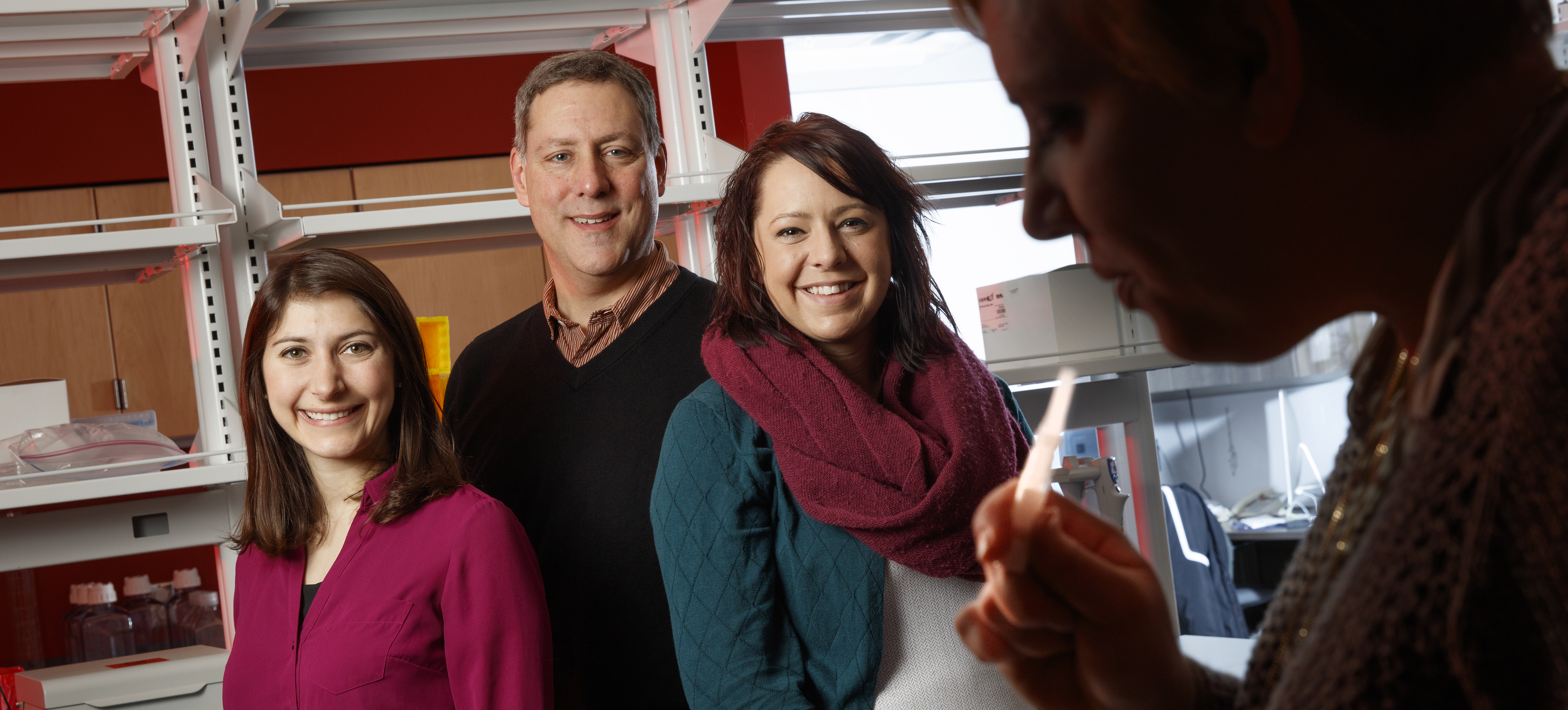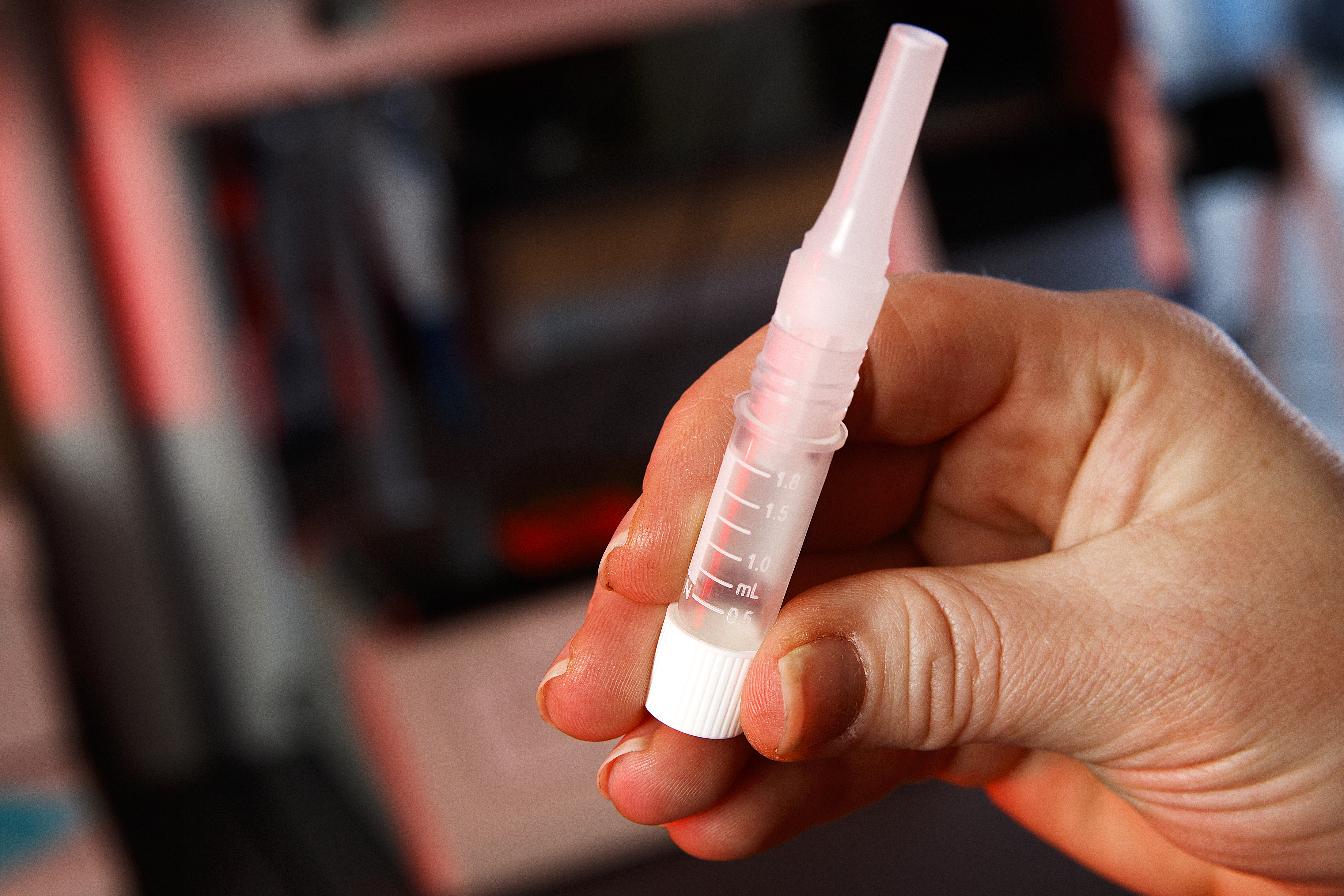
John Nance Garner, a Texas politician who served as Franklin Roosevelt’s vice president, is said to have described the vice presidency as “not worth a pitcher of warm spit.”
If he were alive today, he would need to find a different metaphor.
Saliva, in fact, provides a wealth of information about how our bodies and brains work. It’s widely used in medical diagnostics and genetics and scientists have increasingly used biomarkers found in spit to learn more about how our biology shapes our behavior.
The Salivary Bioscience Laboratory, a cutting-edge facility at the University of Nebraska-Lincoln, now offers researchers a critical tool to investigate the biological components of disciplines like psychology, education, political science, criminology and sociology.
Clinical psychology doctoral student Molly Franz recently was awarded a two-year National Institutes of Health fellowship to study how stressful life experiences influence parent-child interactions. The study will include taking saliva samples from mothers before and after an interaction that involves setting minor limits upon their children. The samples will be used to measure the presence of cortisol, a hormone produced as part of the body’s reaction to stress.
“The presence of the saliva laboratory helped us generate new ideas, because we know we have the resources at our disposal,” Franz said.
“As we planned the project, it allowed us to consider the role that stress hormones played in parents’ responses to young children,” said David DiLillo, a psychology professor who is advising Franz.
Franz’s $95,000 National Research Service Award is the first federal grant for research to be conducted at the Salivary Bioscience Laboratory. More projects are under development by other researchers at Nebraska.
Scientists so far have identified more than two dozen biomarkers in saliva. Doug Granger, a University of California-Irvine professor widely viewed as a leader in salivary bioscience, said hormones like cortisol, melatonin and testosterone can provide insights into stress, sleeping patterns and athletic performance. Secretory Immunoglobulin A and C-Reactive Protein are among markers that offer clues about inflammation and immune system function. Uric acid and Alpha-Amylase are among those that shed light into metabolism and the autonomic nervous system, which is responsible for control of the bodily functions not consciously directed such as breathing, heartbeat and digestion.
Nebraska’s lab is one of 10 formally affiliated with an international network of salivary research facilities. Other affiliated labs in the United States are at the University of North Carolina, Chapel Hill; Emory University in Atlanta; and the University of Colorado’s Anschutz Medical Campus. Other affiliated labs are located in Brazil, Canada, Germany, Hungary and the United Kingdom.
Granger helped write the grant proposal to establish Nebraska’s lab as part of the Center for Brain, Biology and Behavior, or CB3, in 2013 and continues as a senior adviser to the program.
Athletic performance research is one niche where Granger expects Nebraska’s lab to play an increasingly important role in coming years. CB3 and the Nebraska Athletic Performance Laboratory occupy shared quarters on the east side of Memorial Stadium.
Franz and DiLillo received a voucher grant from the Social and Behavioral Sciences Research Consortium at Nebraska to get started with their research project.
The consortium views the Salivary Bioscience Laboratory as an important asset for the university and supports researchers moving into this area of study, said Lisa Pytlik Zillig, a research associate professor with the consortium.
“As agencies like the National Science Foundation and the National Institutes of Health move toward greater emphases on social-biological connections, technological resources like the Salivary Bioscience Laboratory enable researchers to stay at the cutting edge and to increase their competitiveness for external funding,” she said.
Franz and DiLillo were among about 15 participants in a “Spit Camp,” taught by Granger and Senior Research Associate Jessica Calvi in December 2015. A second camp earlier this month attracted 13 more participants. The camp provided an overview of the science as well as training in how samples are collected and information about how Calvi and her assistants analyze the samples for the presence of biomarkers. Calvi also assists researchers in setting up their experiments, developing a budget that can be submitted to grant funders, and interpreting results.
“The nice thing about saliva collection is that it can be used in a wide range of environments,” Calvi said. “All of these researchers can integrate it really well into their work.”
Using published birth announcements, Franz seeks to recruit 75 mothers of children born two to three years ago. She will collect saliva samples from study subjects while they’re in DiLillo’s lab, after they’ve completed an initial survey and interview. Another sample will be collected after the mothers complete a task that involves a common but mildly stressful interaction with their children. Part of the funding for the project will be used to compensate mothers and children for their time.
She expects to complete data collection in December and publish her findings in 2018.
Participating mothers also will be asked questions about their parenting experiences in their homes as well as their child’s behaviors. While watching a video of their interactions with their children, they will use a joystick to indicate their emotional responses on a moment-to-moment basis.
“Saliva testing is just one part of the picture,” Franz said.
Jennifer Mize Nelson, director of administration for CB3, said the Salivary Bioscience Laboratory, like the functional Magnetic Resonance Imaging scanner also housed at CB3, is a core facility available for use on a fee-for-service basis to researchers across the university system and elsewhere.
Some researchers are using the saliva laboratory and the fMRI facility for innovative work on how the body’s systems work together to shape various aspects of human behavior, Nelson said.
“When you’re able to use complementary methodologies to assess the biological processes underlying a particular behavior, you can get a much richer understanding of what is happening in the body,” she said.


Share
News Release Contact(s)
Related Links
Tags
High Resolution Photos

HIGH RESOLUTION PHOTOS








